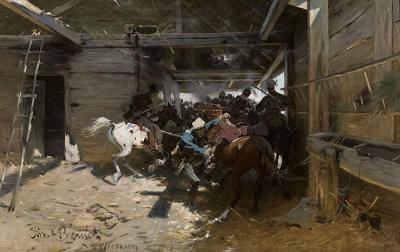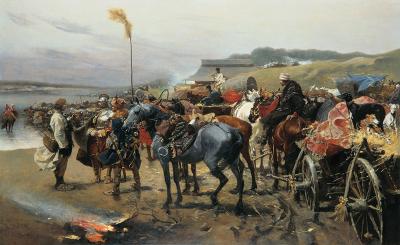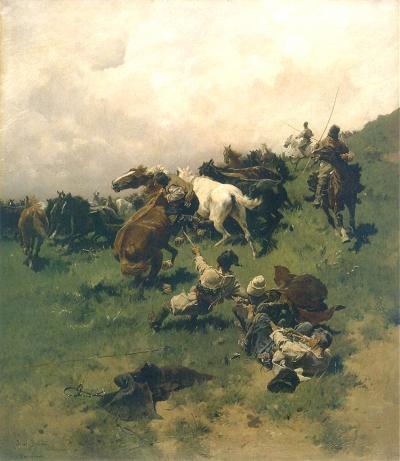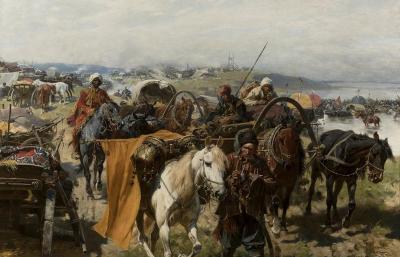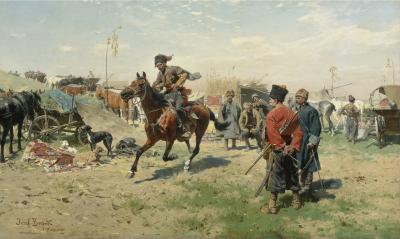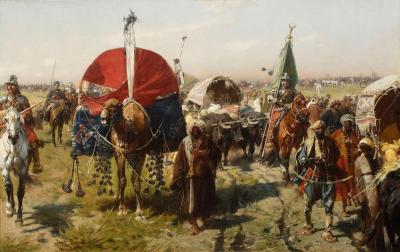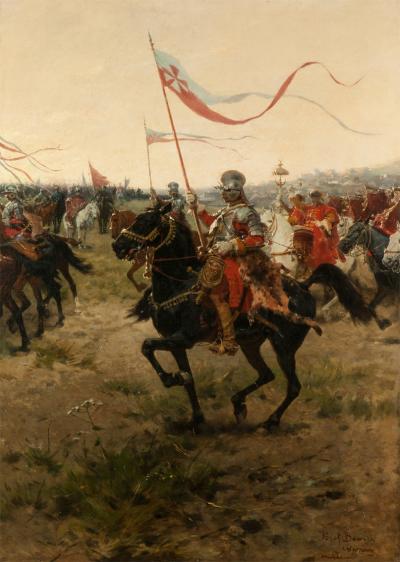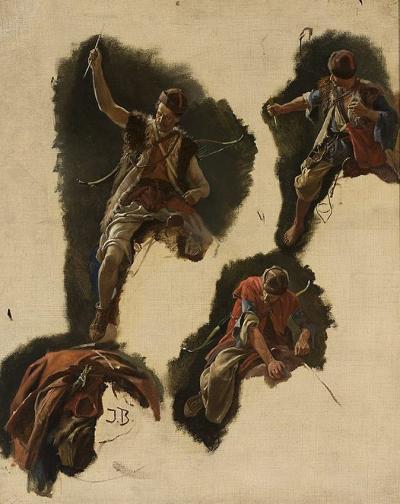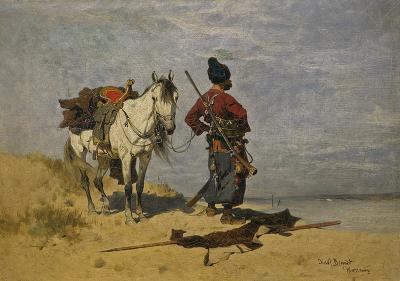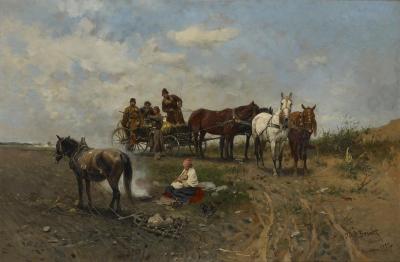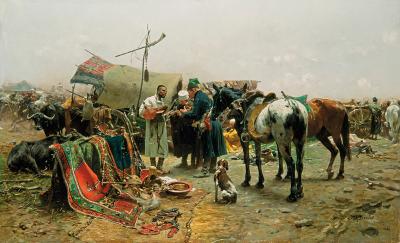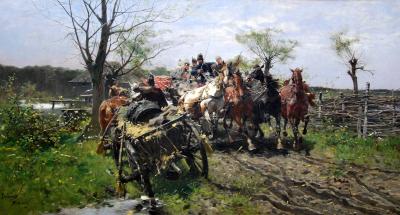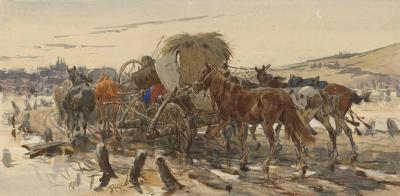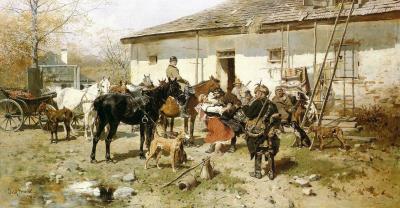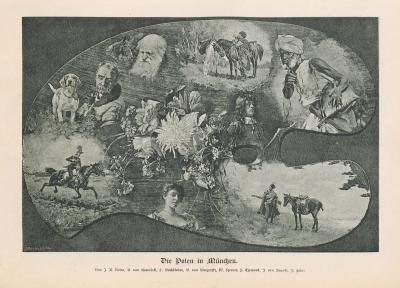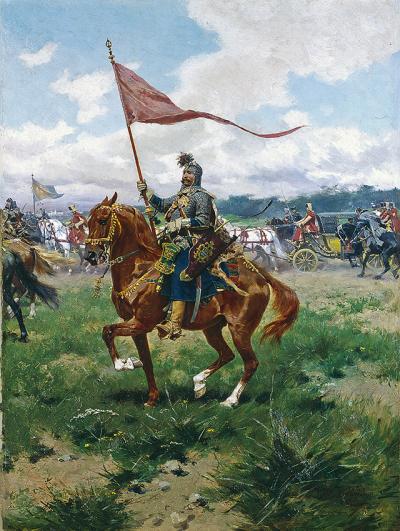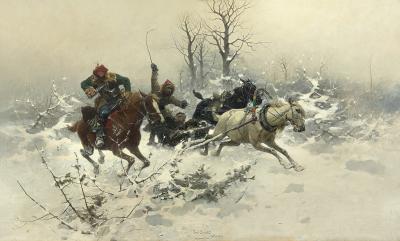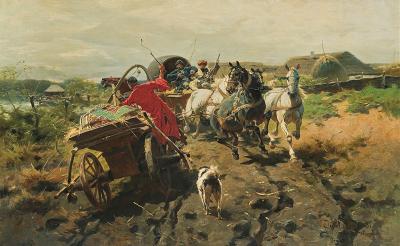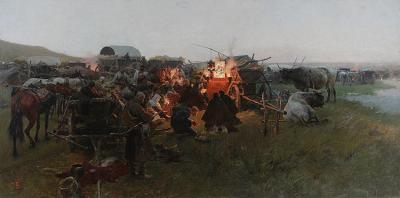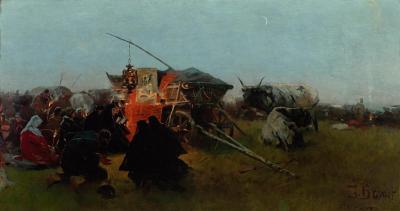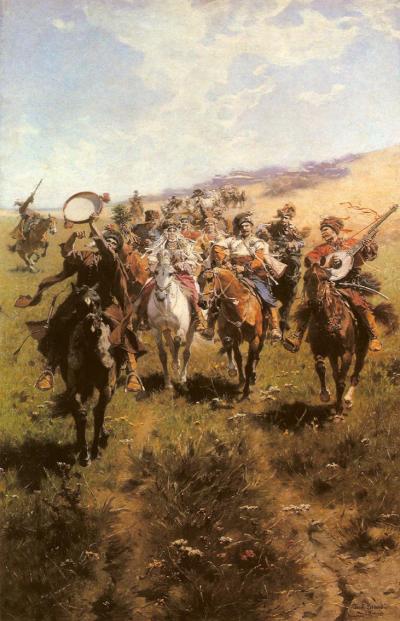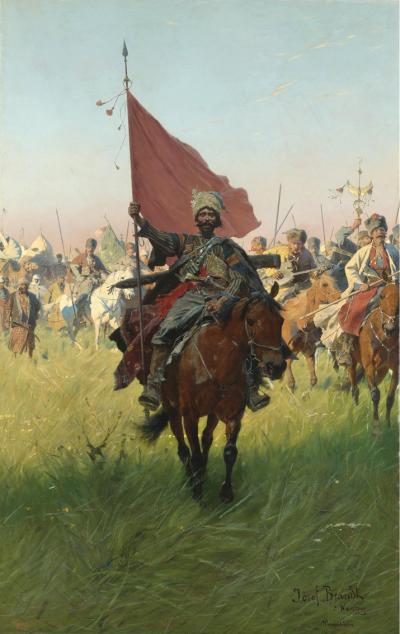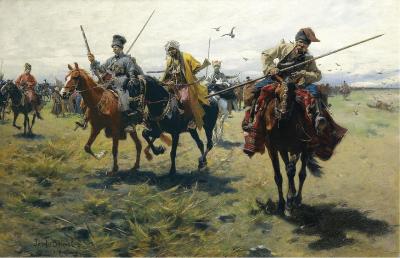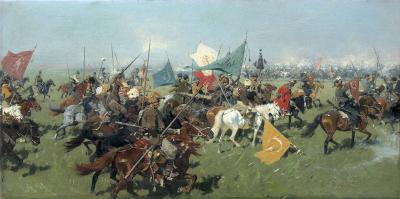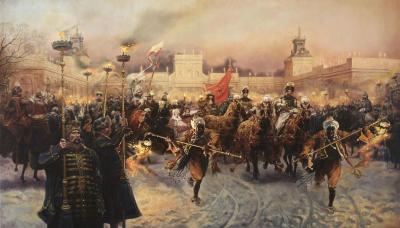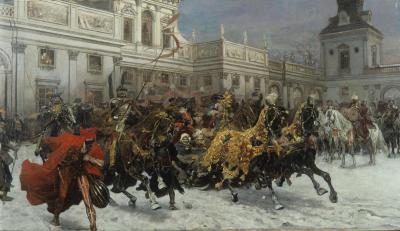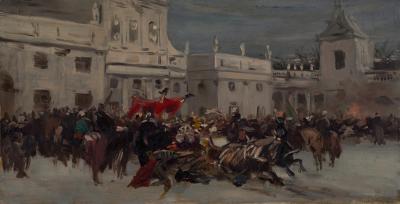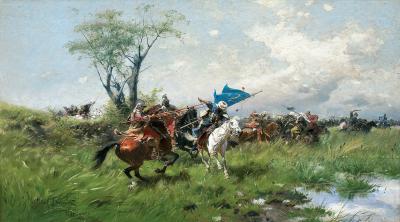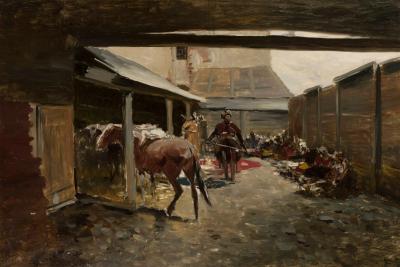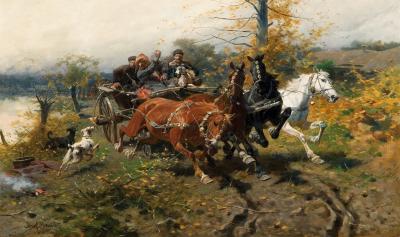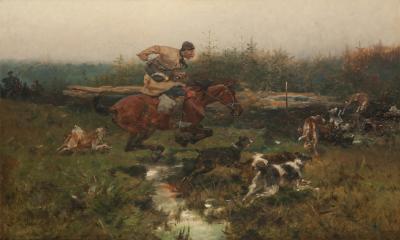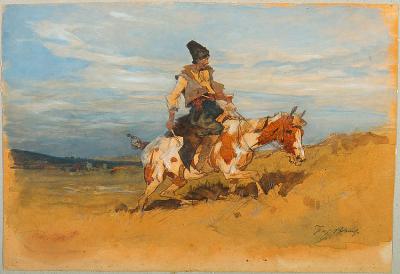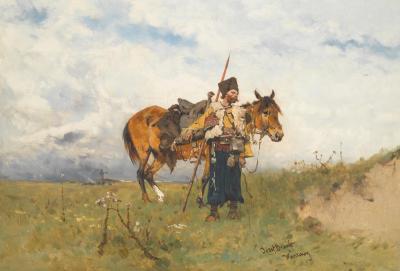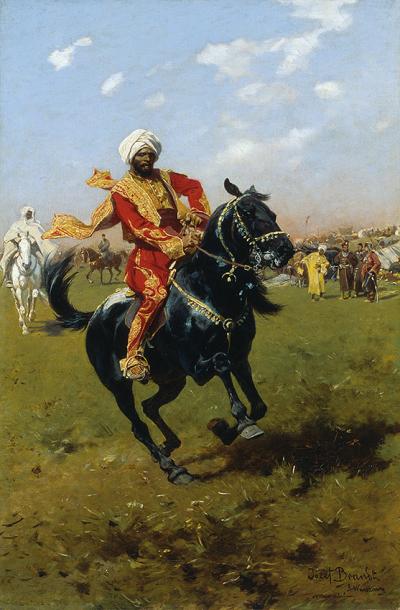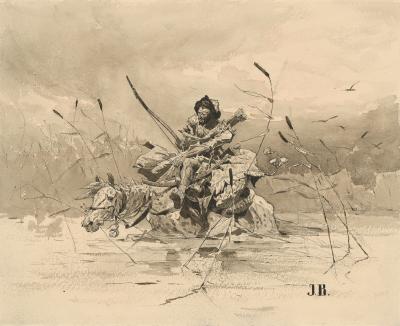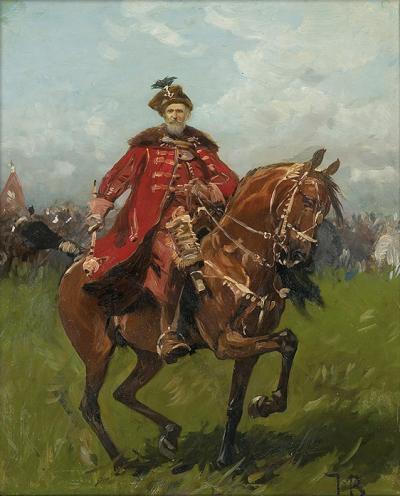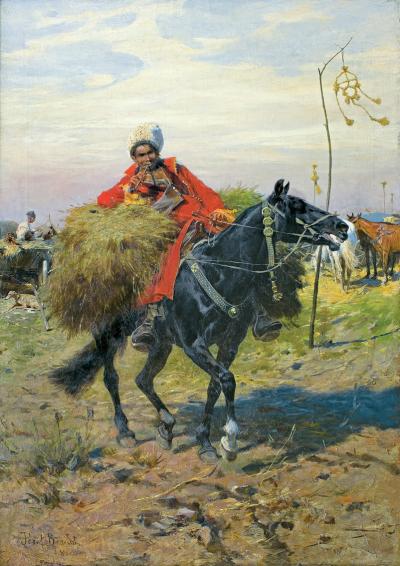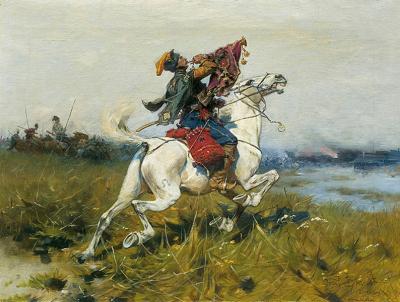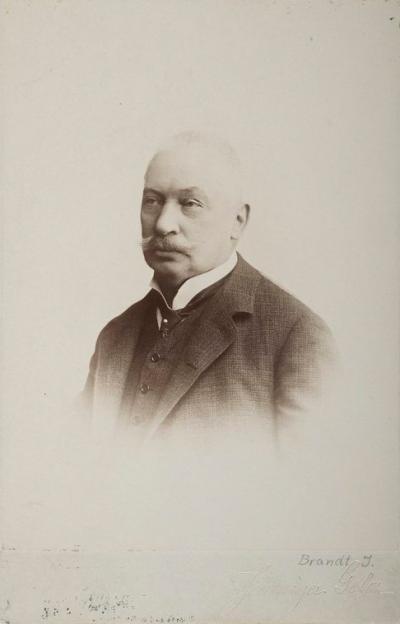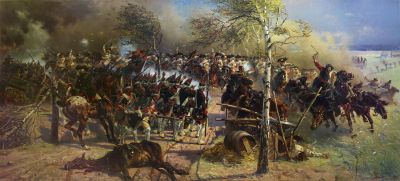Józef Brandt
Mediathek Sorted

Brandt was also widely honoured in the 1880s and 90s. In 1885 the Munich "Polish Colony" celebrated the 25th anniversary of his work as an artist. A committee, including Czachórski and Wierusz-Kowalski, organized the celebrations and prepared a gift of a folder containing drawings and watercolours made by his colleagues. It was reported that Prince Luitpold sent a violet bouquet of gigantic proportions with the numbers designed with flowers " [65] From 1889 onwards, Brandt was a regular exhibitor at the newly established Munich Annual Exhibition, which regarded itself as a competitor to the Paris Salon. On the first of the exhibitions arranged according to nations, Pecht writes: "The Polish contributions are much richer: the majority have admittedly to be attributed to our school, although they all retain their individual character with great energy. Brandt, their leader, offers us a “Departure for the Hunt” in a snow-covered Polish village lane with his usual sparkling animation..."[66]
In the same year, according to the magazine Die Kunst für Alle, a "Joseph v. Brandt album[...] was published by the Photographische Union in Munich. It contained a dozen photographs based on the master's more recent paintings and showing hunting scenes and Cossack life in his homeland and in the Ukraine. The way he reflects their pictorial allure is incomparable.”[67] At the second Munich Annual Exhibition in 1890, Brandt showed “a group of 17th century Cossacks returning home and singing victory songs. Here he displays his usual mastery in the use of splendid colours that are utterly uncorrupted by modern fashions. Even better, because the painting contains more dramatic tension its defence of Polish ihomesteads is full of sparkling liveliness.”[68] In 1891 Brandt turned down an invitation to succeed the first director, Jan Matejko (1838-1893), as the head of the Academy of Fine Arts in Krakow.[69] In 1893 he received an award for services to the Bavarian Crown[70], and an award from the Spanish “Order of Isabel the Catholic” for services to science and art. In 1898 he was awarded the Order of Maximilian by Prince Regent Luitpold. “This is a major and rare distinction, given to ten artists at the most”, wrote Czachórski in a letter: “Brandt had not expected it and for this reason he was absolutely astonished. The Order of Maximilian gives him open access to all Court balls and at all receptions there is a table reserved for those who have been decorated thus.”[71] In 1900 Brandt was made an honorary member of the Academy of Fine Arts in Prague.
[65] Halina Stepień: Die Welt der eigenen Empfindungen, in: Jednodniówka – Eintagszeitung. New edition 2008 (see further reading), page VIII
[66] Die Kunst für alle. Malerei, Plastik, Graphik, Architektur, volume 5, 1889-1890, page 20 f.; Digital version: http://digi.ub.uni-heidelberg.de/diglit/kfa1889_1890/0039
[67] Ibid, page 90; Digital version: http://digi.ub.uni-heidelberg.de/diglit/kfa1889_1890/0128
[68] Ibid, page 338; Digital version: http://digi.ub.uni-heidelberg.de/diglit/kfa1889_1890/0436 (all called up on 23.11.2017)
[69] Die Kunst für alle. Malerei, Plastik, Graphik, Architektur, volume 5, 1890-1891, page 76; Digital version: http://digi.ub.uni-heidelberg.de/diglit/kfa1890_1891/0107 (called up on 25.11.2017)
[70] Die Kunst für alle. Malerei, Plastik, Graphik, Architektur, volume 8, 1892-1893, page 137; Digital version: http://digi.ub.uni-heidelberg.de/diglit/kfa1892_1893/0179 (called up on 25.11.2017)
[71] Ptaszyńska 2008 (see note 32), page XIII

















































































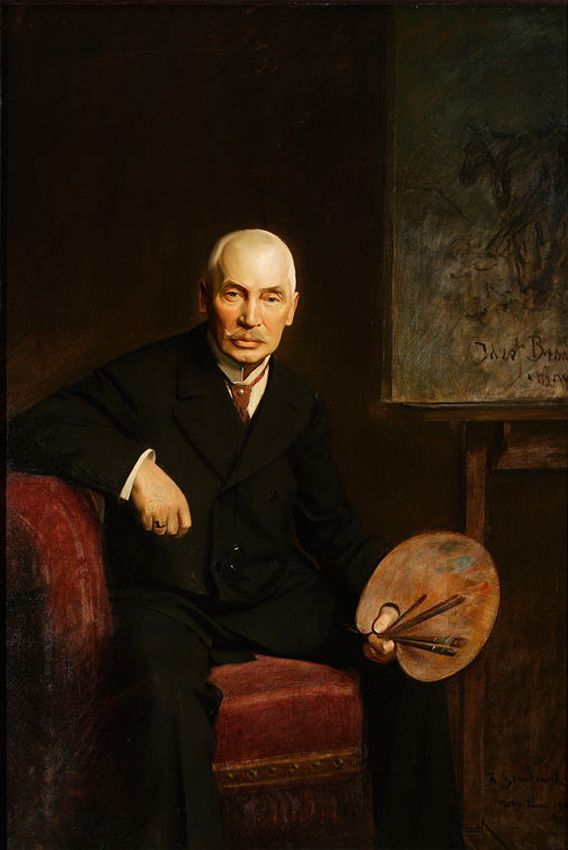
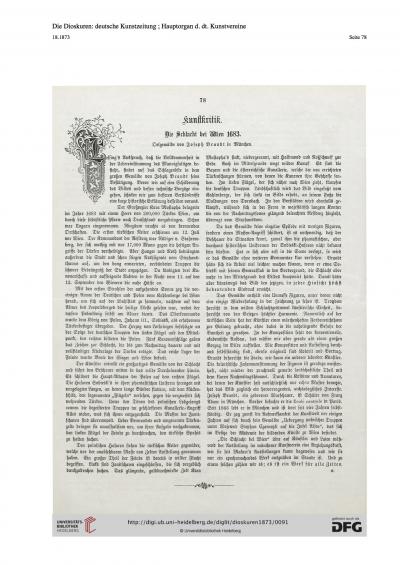
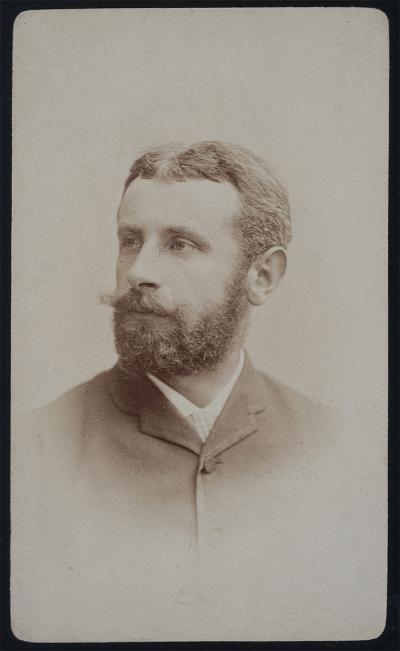
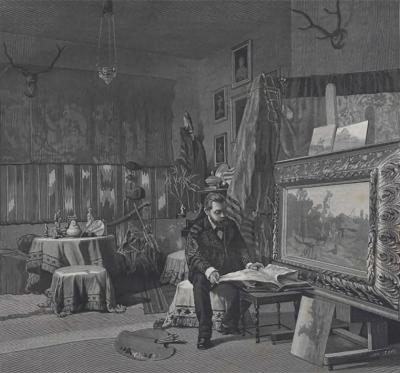
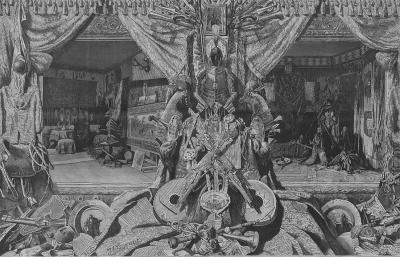
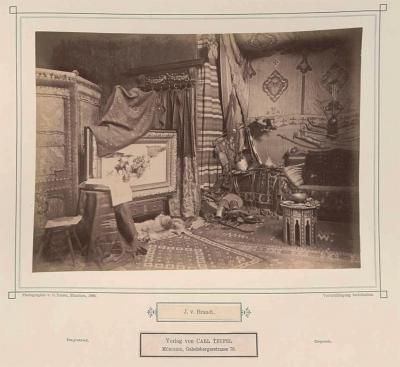
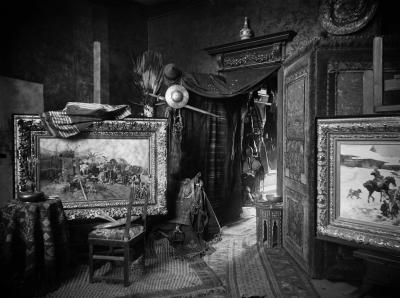
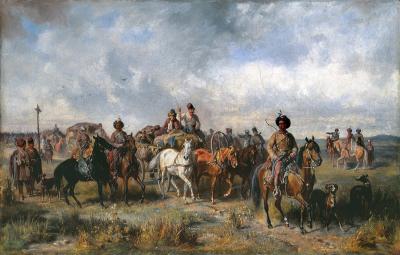
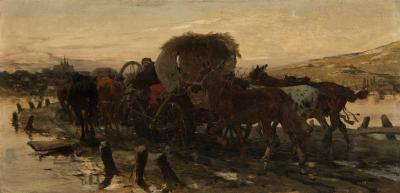
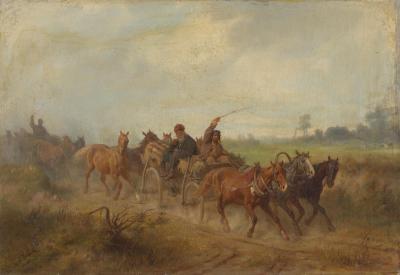
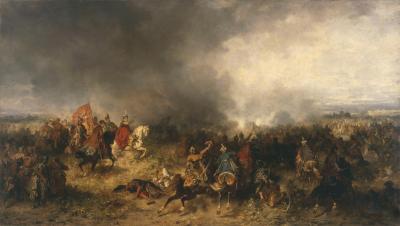
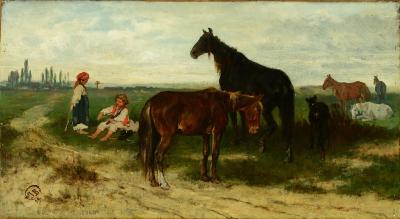
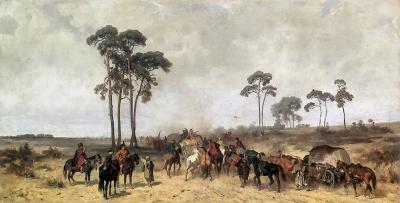
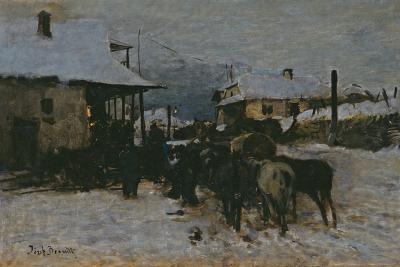
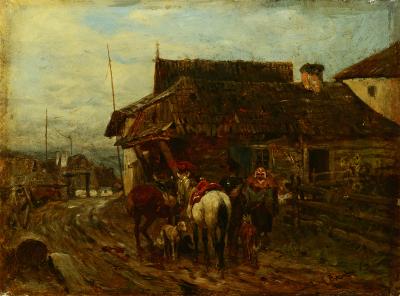
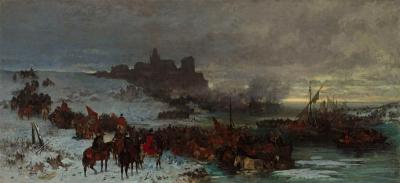
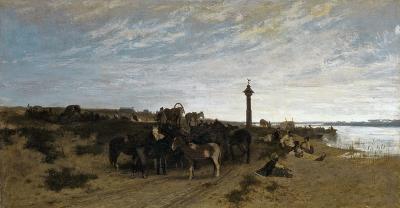
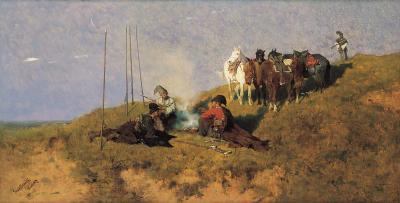
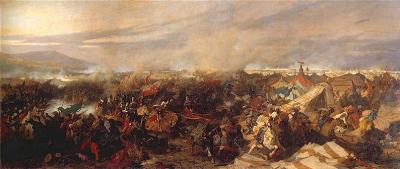
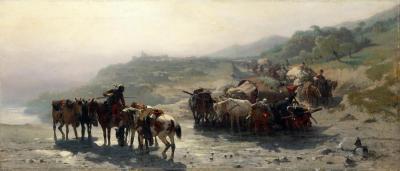
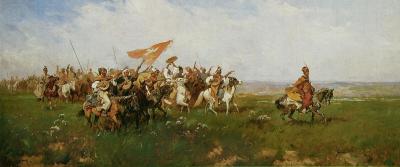
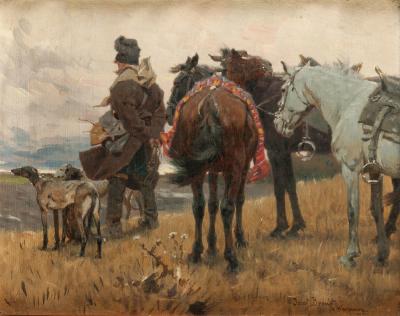
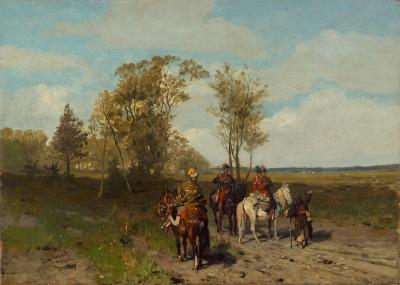
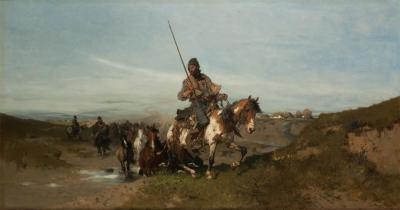
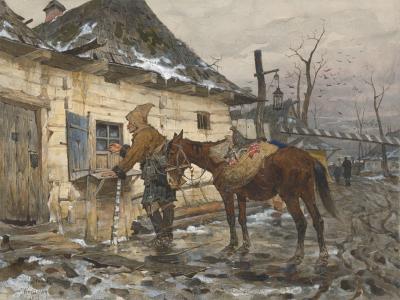
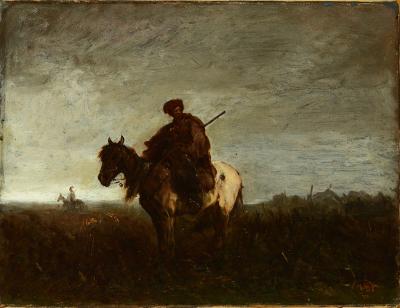
![Fig. 25: The Liberation of Prisoners, 1878 Fig. 25: The Liberation of Prisoners, 1878 - The Liberation of Prisoners [from the hands of Tatars], 1878. Oil on canvas, 179 x 445 cm, National Museum Warsaw/Muzeum Narodowe w Warszawie](/sites/default/files/styles/width_100_tiles/public/assets/images/25_befreiung_der_gefangenen_1878_mnw_cyf.jpg?itok=i5_t7XqM)
